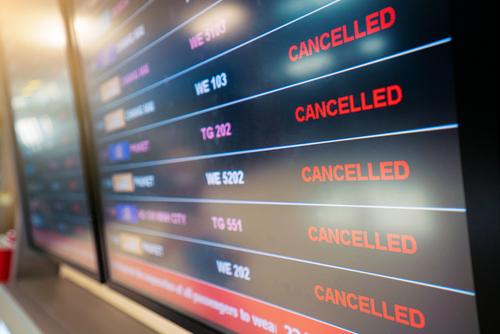

This article is only available to Macro Hive subscribers. Sign-up to receive world-class macro analysis with a daily curated newsletter, podcast, original content from award-winning researchers, cross market strategy, equity insights, trade ideas, crypto flow frameworks, academic paper summaries, explanation and analysis of market-moving events, community investor chat room, and more.
We track scheduled flights (what’s planned) and tracked flights (what took off) from a sample of the largest airports across the world.
Looking at data up to 11 July:
- Global flights are at 86.5% of 2019 levels, with 107k departures per day, a 22k increase from the start of the year (Chart 1).
- China is caught between easing restrictions and new outbreaks. Travel restrictions have eased for those wishing to work, international quarantine times have been reduced, and day-to-day restrictions have become less stringent. But there are also new temporary lockdowns. Most recently, Shanghai began two rounds of COVID tests (12-14 July), other cities are doing similar. Beijing attempted to impose a vaccine mandate (it was rolled back a day later). The restrictions come as the number of high-risk areas has ballooned from one to 317 in two weeks. Despite the setbacks, departures have increased 61.9% from Beijing and 53.5% from Shanghai over the same period. Elsewhere in Asia, the recovery has been more stable; with number of departures now having overtaken the US (Chart 2). There will likely be setbacks. Japan ‘has no doubt entered’ a seventh wave of infections having reopened to visitors a month ago.
- Flights are being cancelled in the West and more cancellations are likely to come. In Europe, Germany (6.1%) has seen the most cancellations. Meanwhile, international hubs like the Netherlands (3.5%) and UK (3.2%) have also been affected. European airports operate at near pre-COVID levels (92%) while restrictions have continued to ease (Chart 5). Departures increased just 2.0% WoW across the region (Chart 4). In the US, cancellations are less acute, but remain an issue. There were 13,397 flight cancellations in April, a 47.1% increase from March. This is four times the amount in April 2019. This, and a reduced appetite to travel, have left the US lagging Europe and Asia-ex-China (Chart 2). Departures increased just 0.8% WoW across the country (Chart 4).
- For more information on recent changes in COVID cases, please see our weekend report by Dominique and Henry.
Information on long-term movements in flight data is available below.



US

UK

Italy

Spain

Germany

France

Canada

China

Japan

Hong Kong

South Korea

Singapore

Thailand

